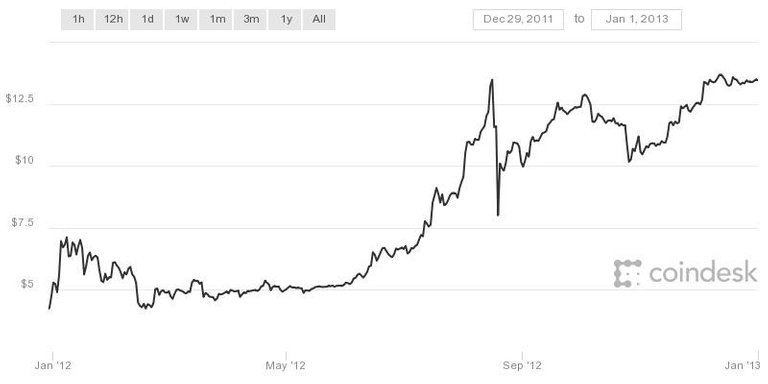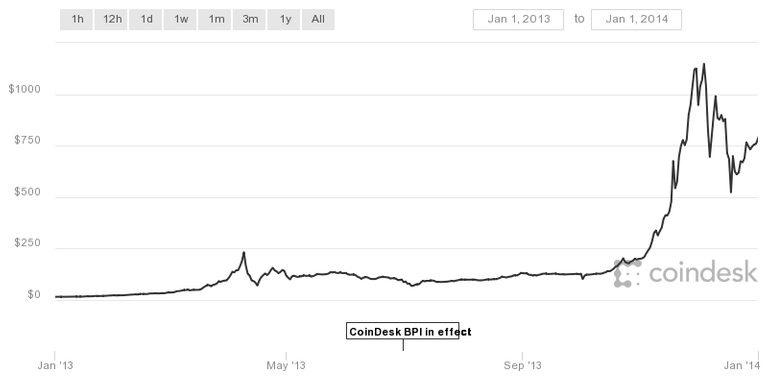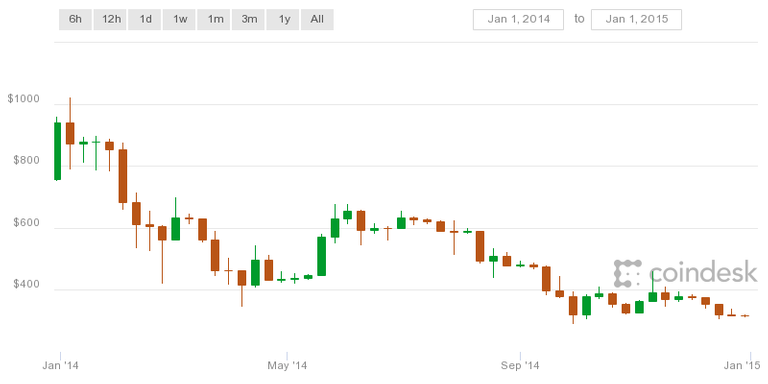At the age of 17, Vitalik Buterin sat down at his computer and started writing. He wrote about a topic that he was uniquely qualified to write about — Bitcoin for teenagers.
From February 2012 to July 2014, he independently wrote ~260 articles for Bitcoin Magazine — on average, about nine a month. We went back to day one in Vitalik’s journey to see, through his eyes, the steps of evolution of the Bitcoin community when it was trying to break $7. Nearing the end of his writing at Bitcoin Magazine, we get a first hand look into Ethereum and how it started.
The purpose of this article is not to explain who Vitalik is, which has been done quite well, in a couple places. It is intended to be a history on the early years of the Bitcoin movement, and how the past brings us to today. In the meantime, it will showcase Vitalik’s contributions to the community, before there was much of a community at all. For every year, we’ll take a look at a few articles which may be even more meaningful today.
2012: Unstable Exchanges, Silk Road, & Bitcoin Resiliency

Bitcoin triples in value…from $4.25 to $13.51.
In Vitalik’s early writings, he focused on getting the basics of Bitcoin explained (wallets, mining pools, and a more general introduction), before jumping into current events in the community and thought pieces. He soon revealed multidisciplinary knowledge in technology, finance, cryptography, philosophy, and psychology.
One of his first ‘current events’ covered the heist of 43,000 BTC from Bitconia, worth a whopping $150M in September 2017. He covered the event from multiple angles, including the details of the heist, and reactions of the community and Mt. Gox — at that point, the single largest Bitcoin exchange. Instability in exchanges remained a theme for the calendar year.
In June 2012, he reviewed the ‘Great Bubble Of 2011’ — where Bitcoin went from sub-dollar prices up to $31.91 before eventually collapsing below $7. In hindsight, the true ‘great bubble’ may still be pending.
From there, Vitalik dives into the working of the now-defunct Silk Road (Part I, Part II), the dark-web marketplace built upon Tor and Bitcoin. At the time of writing in 2012, the Silk Road was one of the largest operations in the bitcoin community. Just one year later, Dread Pirate Roberts was arrested and the Silk Road shut down. The black market of bitcoin remains active today with numbers of smaller players. It is indeed a side effect of the bitcoin movement — although overblown in popular media.
In between these current events, Vitalik philosophized. Consensus and tokens both were discussed, well before proof-of-stake or DApps were vocabulary in the community.
2013: Bitcoin Explodes & Crypto Globalization

Bitcoin begins 2013 at $13.30, and ends at $757.70. The price briefly touches $1,000 during Q4, 2013.
In 2013, market value of all bitcoins hit $1 billion. Four years after the genesis block was mined, the community exploded. Bitpay, the largest bitcoin payment processor, integrated with Amazon and surpassed $5 million in monthly payments. The ‘security’ of the network began coming of age, with less huge hacks and better governance procedures by exchanges and individuals.
Meanwhile, international sovereignties struggled with central bankers. The Eurozone eventually bailed out Cyprus for $13 billion following poor investments by the country’s leading banks. Vitalik covered crises in Cyprus, Iran, and Argentina — countries which slip the radars of the western world, but point to the fundamental value proposition of cryptocurrencies.
In each of these nations, hyperinflation and investment regulations leave individuals with little choice to invest their money. Want to put your money to work in Argentina? Capital controls make it difficult for you to invest outside of the country. If you leave your money in cash, inflation threatens to take it’s value away. Trading for US dollars is a risky proposition, only allowed via a black market. Vitalik discusses all of these points — and posits that the 21st century system must somehow atone for these pains. Bitcoin is offered as the seeds to a solution.
During the year, Vitalik pokes his head into a variety of communities in the cryptocurrency space. Articles explain sentiments and work being globally in London, The Netherlands, Canada, Israel, Germany, and China. In exploring these communities, he observed two divergences from western norms:
Especially in the United States, from watching mainstream television and media one gets a very particular stereotype of how a wealthy business owner is supposed to look: a 40+ year old white male, with a large body over 180cm tall, and always wearing a suit. For those who have not been steeped in Silicon Valley culture, at first Bitcoin 2013 was even slightly unsettling in terms of how quickly and utterly that stereotype was dispelled. Even the most prominent business owners were surprisingly average in weight and height, more likely under 25 than over, and equipped with a T-shirt as often as anything else.
What’s more, this new wealth is physically, and socially, decentralized; although many firms now are located in Silicon Valley, many more are from regions as diverse as Florida, New Hampshire, France, Israel and China, and as these businesses grow local communities around the world will benefit. This may well prove to be a one-off effect, but even still it can be appreciated as part of a larger process of positive disruption through technological change. And in that regard it is very significant; the only other technology that has had a similar effect in the past thirty years is perhaps the internet itself.
2014: The Birth Of Ethereum

Bitcoin falls precipitously in 2014 $757.60 to $319.32.
Vitalik launched Ethereum in early 2014, right into a down crypto market.
He writes on his growing belief that a generalized protocol, which allows for inventors to determine their uses for the blockchain, is the protocol the community needs. Instead of building everything under the sun, give the people the tools to build what they want.
Give a man a fish, and you feed him for a day. Teach a man to fish, and you feed him for a lifetime. — Chinese Proverb (And Basic Ethos Of Ethereum)
Today, it is clear that investors agree. Ethereum stands upon Satoshi’s on Bitcoin and is driving change in the community today. The Ethereum community is the most vibrant in the crypto community. As we’ve seen things can change quickly in early crypto world. Vitalik aims to make sure Ethereum’s here to stay.
Vitalik’s Beginnings
When you see Vitalik, 23, in front of us today, he epitomizes the crypto community ethos. The community values research and execution (not suits), and deep, multidisciplinary domain expertise. It demands, like any great challenge, clear leadership and empowerment of a community. Vitalik, though he stumbles, has done a great job thus far.
Posted Using LeoFinance Beta
Source of plagiarism
Plagiarism is the copying & pasting of others' work without giving credit to the original author or artist. Plagiarized posts are considered fraud and violate the intellectual property rights of the original creator.
Fraud is discouraged by the community and may result in the account being Blacklisted.
I'm new here on leofinance. I apologies for not giving credit on the "copied" parts of the post, won't happen again!
Posted Using LeoFinance Beta
Congratulations @saiss! You have completed the following achievement on the Hive blockchain and have been rewarded with new badge(s) :
Your next target is to reach 50 upvotes.
You can view your badges on your board and compare yourself to others in the Ranking
If you no longer want to receive notifications, reply to this comment with the word
STOPCheck out the last post from @hivebuzz: